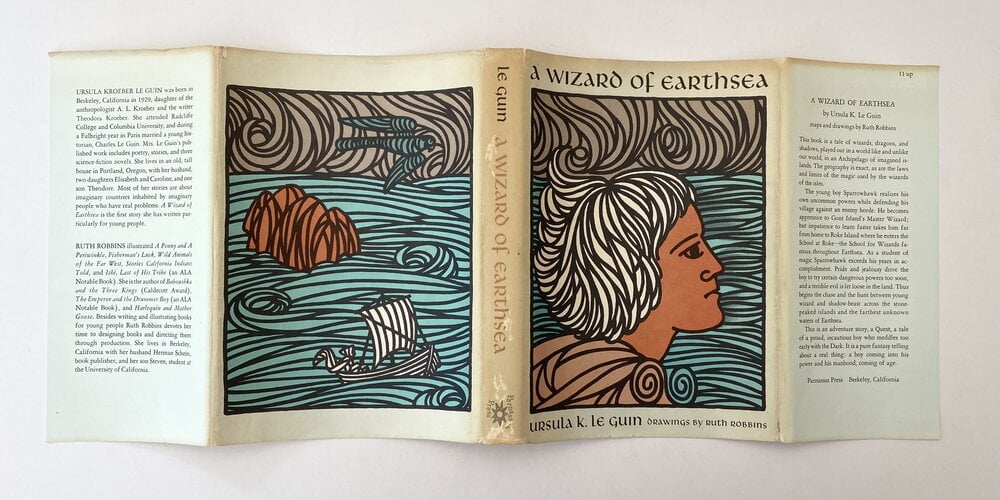
| Genre | High fantasy |
| Author | Ursula K. Le Guin |
| Language | English |
| Number of Pages | 320 |
| Release Date | 1968 |
Only in scilence the world, Only in dark the light, Only in dying life: Bright the hawk’s flight on the empty sky.The Creation of Ea, A Wizard of Earthsea
A Wizard of Earthsea is the first of six books that make the Earthsea cycle by Ursula K. le Guin. Asked to write a young adult fantasy novel, Le Guin agreed, and in 1968, A Wizard of Earthsea was published. It is one of the favorites among readers, and certainly the most famous. Ged Sparrowhawk is one of the characters that readers love the most.
The plot is simple – a young boy discovers a magical power and the story follows his way to become a wizard. He is impatient and he makes mistakes. Through his efforts to survive and make things right again – he becomes a powerful wizard. It is interesting how Le Guin follows the typical high fantasy path, and yet, she doesn’t really stay behind the line – she cautiously crosses it. Pushing the limits and yet staying consistent and within the genre is one of the main characteristics of the whole Earthsea cycle.
Earthsea world
Alternative worlds and maps are among the main high fantasy characteristics. These worlds are imaginary, yet logically possible.
At the beginning of A Wizard of Earthsea, we can see a map of Le Guin’s imaginary world – the world of hundreds of islands. Other books from the Earthsea cycle begin with maps of the Earthsea parts where the plot of the novel happens.
We are going to discover the islands of Earthsea with the characters. We will go wherever they go, starting with Gont where Ged Sparrowhawk was born.
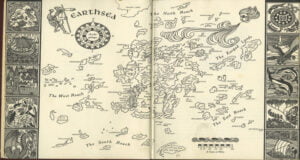
A map of Earthsea that shows all areas and islands from the first edition of the book A Wizard of Earthsea by Ursula K. Le Guin, with illustrations by Ruth Robbins
Gont island: home of the greatest wizards of Earthsea
The people of Gont island are known for keeping goats, but it is also an island where the greatest wizards were born. We meet the main character of A Wizard of Earthsea, Ged Sparrowhawk, as a goatherder from the village of Ten Alders.
Among goats, he discovers that he possesses the power for using magic. Magic is a part of Earthsea, but only people who are born with power can practice it. However, while boys can learn from wizards, women learn by themselves. They become village witches who care for the sick, and make love spells, in short – they are not considered able to mess with “high magic”.
One of them is the boy’s aunt who recognized his power when he uses the spell he had heard from her. It worked, the boy gathered the goats, but they started chasing him. His aunt used another spell to separate them from him. That was the moment she knew he was born with power and she started to teach him more spells. Ged wanted to learn even more, so he tried to get more knowledge wherever it was possible. By practicing magic, he got the name Sparrowhawk because one bird would come on his call.
When people from Karg Islands attack, the villagers from Gont can’t defend themselves. They don’t know how to fight, they don’t even have anything they use as a weapon. Kargs are different, they belong to another race and culture. Karg islands are separated from the part of the world called the Archipelago, so the knowledge of the Kargs lands is limited.
Sparrowhawk saves the village by making the mist and leading the Kargs through it, with others who stayed to fight, to the cliff. That would be the start of his way of becoming a wizard.
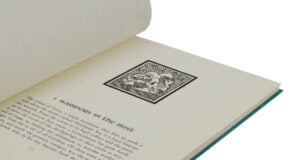
Sparrowhawk and Ogion
After he had saved the village from Kargs, twelve-year-old Sparrowhawk is in some kind of coma. No one knows how to help him. Then Ogion, the wizard who lives in the Gont mountains shows up. He gives Sparrowhawk his true name – Ged.
On Earthsea, magic is about words and true names. Nothing can exist without a true name in a language that only dragons still speak, while wizards have to learn it. Knowing a true name gives them the power of controlling and changing things, even transforming themselves into something else. That’s why no one tells the true name to everyone, but only to the ones they trust with their lives.
Interestingly, the idea for the power of words and language came from science. Sapir–Whorf hypothesis suggests that the language an individual uses has an impact on their perception and understanding of the world.
The most important thing for wizards is to keep the balance – every act has its consequences. If you turn the stone into a diamond, some mountain in the other part of the world could collapse. If you turn yourself into some animal and stay for too long in that form, you risk forgetting your true name and there’s no way back to human form. Le Guin consistently uses the idea of balance, close to Taoism, in every layer of Earthsea structure. Magic is not an exception.
Ogion, of course, knows all about magic and balance. However, Ged will learn about it the hard way. He is impatient to learn everything quickly. Ged may have strong magical power, but he’s a typical seventeen-year-old when he opens the book he was not ready to read just because the girl he met dared him to call the spirit of the dead. Ogion got the shadow that showed up back where it came from and offered Ged a choice to stay with him and learn the Ogion’s way, or go to school for wizards. Ged chooses to go.
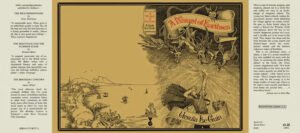
Roke Island and the school for wizards
Le Guin’s idea of a school for wizards was original in 1968. In the documentary Worlds of Ursula K. Le Guin, Neil Gaiman said: “I don’t think Harry Potter could have existed without Earthsea having existed.”
On Earthsea’s Roke Island young with the power for practicing magic learn how to do it. Ged finds a friend there, but also gets into a teenage rivalry trap. Trying to show the great power he knows he possesses and to show his superiority – he makes the same mistake. This time, no one can get the shadow back where it belongs. Archmage Nemmerel only sent it away from Ged and paid the highest price for that temporary solution.
With his pet otak – a small and furry animal – and a friend’s true name he can call in need, he leaves Roke Island.
A wizard of Earthsea and dragon Yevaud
Archmage Gensher sends Ged to Low Torning Island to deal with the threat of a dragon who made his home on the nearby island Pendor. Practically, the young wizard got the job.
Low Torning is a distant place where Ged was hiding from the shadow for some time, but after he had tried to save the boatmaker’s son, he realized that the shadow was looking for him. He decides to finish with the dragon and leave.
Dragons in Le Guin’s world are not dangerous treasure keepers. It is Western European mythology influence that most fantasy writers follow. Le Guin’s dragons are closer to the Far East image of these creatures. They are old, wise, beyond good and evil. Yevaud has the most similarities with typical dragons from Tolkien’s novels and books written under Tolkien’s influence. He does live on the island full of treasure and represents a threat, however, he doesn’t really care for the treasure that was there when he came. He stays on Pendor Island because he had six recently born sons with him.
Yevaud is the first dragon Ged met. After he had killed some of his sons, Yevaud finally shows up and speaks to Ged who guesses the dragon’s true name using the knowledge from Roke. Knowing someone’s true name is being able to harm them. The dragon offers Ged a treasure (something that we don’t expect from dragons for the reason I already mentioned). The offer was refused, so he gives Ged another one – he says that he can tell Ged the Shadow’s true name. It is something that Ged wants the most at that moment because he can not fight the Shadow If he doesn’t know its name. Still, he doesn’t agree to this tempering agreement, so Yevaud agrees to leave the people from Low Touring alone.
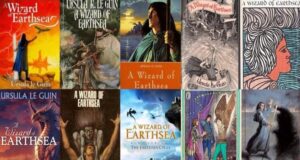
Chasing the Shadow
The job with the dragon is done and it’s time to leave, but Ged has no idea where to go. He decides to get back to Roke where he would be safe, and ask for help. However, as the boat got close to the Isle of the Wise, Ged realizes that the protective enchantments surrounding the island prevent his reentry because the Shadow follows him.
To Osskill and back to Gont
Upon learning about the stone of Terrenon, Ged travels to Osskill, where he is enticed into the wilderness by the shadow in the form of Gebbeth. Fleeing from the shadow’s imminent capture, Ged eventually found his way to the Court of Terrenon. He meets Serret there, the lady of the castle. This is the second time Serret shows up in A Wizard of Earthsea. Remember the girl from Gont who dared Ged to call the dead? It’s her. Now she tempts Ged with the stone of Terrenon, offering him the power to name and conquer the shadow.
However, Ged recognized the presence of an Old Power—an ancient and dangerous entity—trapped within the stone. He escapes the castle alongside Serret, pursued by the stone’s minions. While Serret transformed into a seagull and was eventually caught and killed, Ged used his own transformation ability to turn into a falcon, soaring all the way to Gont and his first teacher Ogion.
Ogion finds Ged in falcon-form and recognizes him. The wise wizard assisted him in returning to his human form – he’s been for too long in animal-form. Ged finally realizes what Ogion tried to tech him, but the damage was already done. Ogion advises him to confront his shadow instead of evading it.
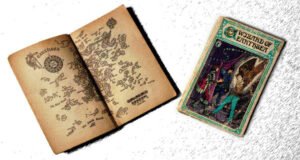
Open sea and the island of Iffish
Still young, but now a much wiser wizard builds the boat and goes alone to the open ocean to search for the Shadow. He finds it and calls it. Ogion was right, it feels hunted and doesn’t attack him directly, but leads him to a small island.
The wizard would’ve died there If he hadn’t found two people who clearly have been living on that unknown and nameless island for such a long time that they forgot what humans looked like. They are scared of Ged and don’t understand his words, but eventually, they help him. The woman even gave him a gift when he was about to leave in a boat he managed to build. He keeps a half of a broken arm ring not knowing how important that piece of metal was. More about that in the article about The Tombs of Atuan, the book that comes after A Wizard of Earthsea. Now we’re still chasing the shadow.
In his further search, Ged goes to a couple of islands and finds out people saw a man that looks like him. Here, we recognize a well-known motive of an evil twin or a double. The motive is actually there all the time, but Le Guin changed it so we see it at this point.
On the island of Iffish, Ged meets his friend Vetch from Roke school. As a true friend and someone who cares for the world, Vetch decides to join Ged on this journey. They sail so far that Vetch fears they would reach the edge of the world.
At last, Ged finds the Shadow. He leaves Vetch in the boat and goes to meet the enemy. When he got close, he called the Shadow by its true name – Ged. He finally figured it out.
Enemy inside in A Wizard of Earthsea
In high fantasy, evil usually comes from the outside. But this is Ursula Le Guin’s novel we are talking about. Tolkien, the alpha and omega of high fantasy has a great influence on her, but it doesn’t stop her from incorporating something new. Tolkien’s characters also have their internal battles and dilemmas, but in A Wizard of Earthsea that goes much further.
It is hard to imagine that Le Guin haven’t read Carl Gustav Jung at the time she was writing A Wizard of Earthsea, as she said. They both talk about the same concept of becoming a complete person by getting a Persona with Shadow that represents our secret selves together. Ged becomes a mature and complete person by understanding and accepting his Shadow. He does something so hard to be done that it makes him one of the most powerful people in the world.
Also, Jung says that Shadow is not some absolute evil, but rather something primitive in ourselves. Psychologists claim that we find some people particularly irritating because we recognize our own Shadow in them. Ged sensed his Shadow in Jasper on Roke Island. But since this is a fictional world, Ged’s Shadow is quite close to absolute evil, until the moment the wizard accepts it. That way, The Shadow loses any power over him.
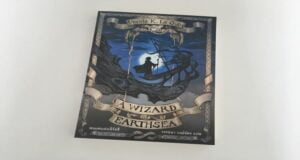
A Wizard of Earthsea as the unique high fantasy novel
A Wizard of Earthsea is a classic high fantasy novel that retains the genre’s core elements established by Tolkien. However, Le Guin’s work stands out through its unique changes that remain within the genre’s boundaries.
To construct the world of Earthsea, Le Guin draws inspiration from Far East mythology, American Indian heritage, various island nations, and tribes, as well as classic literature, in contrast to the prevalent focus on Western European mythology in fantasy. Furthermore, the world of Earthsea primarily consists of humans, dragons, and smaller creatures like otaks and harrekki, instead of many species because, unlike most fantasy books, A Wizard of Earthsea is a short novel, reflecting modern writing styles.
Le Guin’s novel(s) incorporate influences from science fiction, such as the Sapir–Whorf hypothesis and the law of conservation of energy, distinguishing her work from previous fantasy authors.
Through the main character, the author explores the origins of great wizards, a perspective not commonly seen before her time. She also internalizes the conflict between good and evil, adding depth to her storytelling. And while young wizards have become commonplace in contemporary literature, Le Guin’s portrayal in 1968 was groundbreaking.
Her subsequent works, particularly the so-called second trilogy, further pushed boundaries and maintained logical consistency. But even without additional books, A Wizard of Earthsea alone would be considered a unique contribution to the genre of classic high fantasy.
